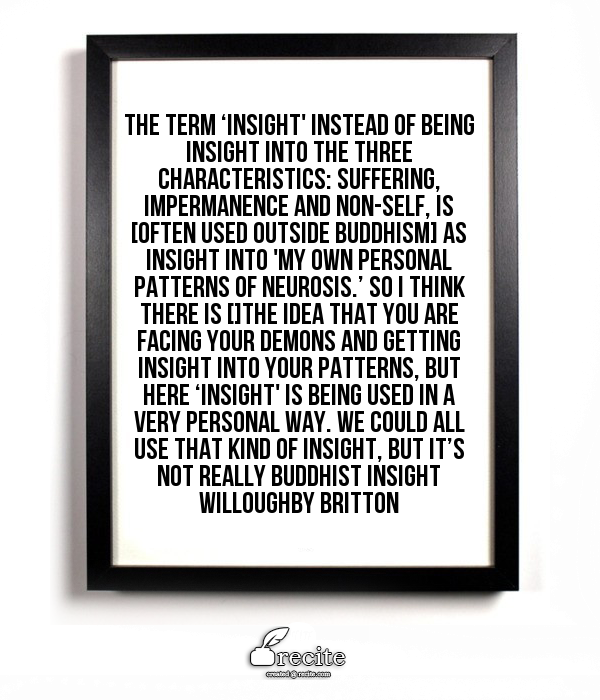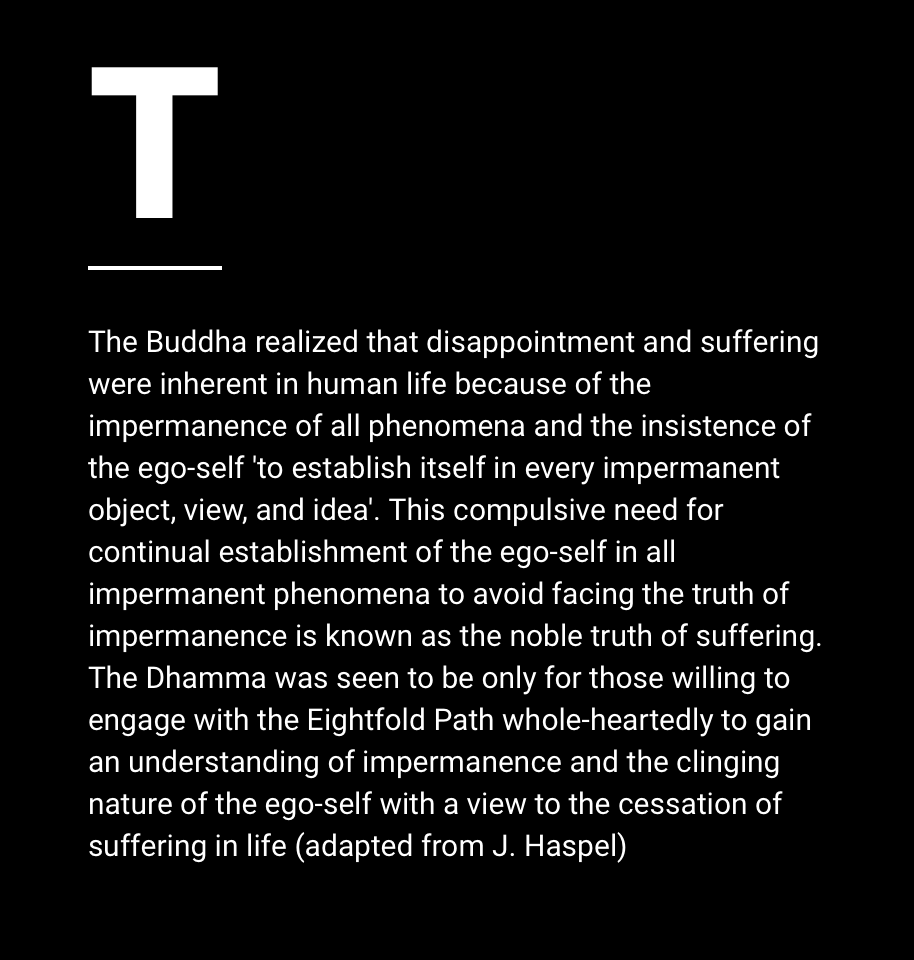
This week we are starting to look at the influences on Gregory Kramer in the shaping of Insight Dialogue (ID) as a practice. My students are starting to read David Bohm and I am asking questions to help guide their conversations in the learning management system. One of my students notes that I asked different questions in different spaces: One about influences on Kramer and one on the differences between Bohm and Kramer. They wanted to know which question was the ‘right’ one to answer: ‘Was the question about the influences of Bohn on Kramer or differences between the the two?’
“I wanted you to start to explore both! I am asking lots of different questions in different spaces to help you engage with the topic – influences and differences are often less attended to than similarities to each other or to approaches we already know and understand – start to work with challenging the obvious!”
Their question made me think about the ideas that are less obvious in what we are studying.
Another student wants to meet not because she has a problem but because ‘I am curious to understand a little more about the flow of dialogue and what some more of the “do’s” and “don’t” are. For example, while dialogue isn’t a discussion, I feel that I do take into account what another has said when I speak, and may even address it. Is that really in line with this idea of emptying the cup and coming from silence? Is it always a clean slate? I have these types of questions :)’
Clearly these types of questions are just the kind of inquiring questions that show me students are engaging with the ideas. I made an appointment to meet but also started our exploration of the questions in written form. I tried to reflect on what is useful as one starts with this practice, what might guide the new practice a little. Below I expand on what my email to that one student said in the hope that it may help the rest of the class.
- What is the flow of an Insight Dialogue session? The flow of an Insight Dialogue session, should be very slow. You need to give each other permission to break out of the habit of conversation for long enough that you can watch your own habits – am I getting ready to speak? Am I trying to agree/disagree with what I am hearing? Do I want to interrupt? Am I bored? What is arising in my own experience as I listen and notice what is happening externally? I would say that it is precisely the times when you feel you have to speak are the times to close your eyes, say nothing and practice the pause
- What are some ‘Do’s and don’ts’ ? Some reflections on this already in the question above and it is difficult to give generalities aside from your own experience. Yet, let me add a little more guidance here: Do pause and gain control over pausing any time you choose to pause, don’t make your response dependent on what you hear, but always bring it back to the contemplation topic or more generally the 3 characteristics (anicca, dukka, anatta) as this is what gaining insight means in this context. It is not personal insight but insight into the dhamma.
- Do you take into account or address what the other says? This is often a concern as it feels ‘rude’ not to follow traditional conversational ritual. Yet, Insight Dialogue is precisely not a conversational ritual. It asks that you break habit and learn from that. You take into account the other/s by listening and attending to your own habit in wanting to respond: Do I want to fix? Do I want to disagree? Do I want to share something of my own life for comparison? All these are patterns or Sankhara are the habit mind we seek to stop clinging to and yet cannot most of the time. The practice in an Insight Dialogue session is to compassionately note habit, walk beside it without being compelled to act on it.
- Is it always a clean slate? This is a lovely question. The idea that each moment can be a clean slate without history or habit, a tabula rasa we attend to and take the next action without preconceptions. I said to my student: As an intention or aspiration, yes. Of course, we human cannot do that easily. We cannot even stop ourselves from speaking even when we decide we will not speak, we cannot stop history and rigid views arising even when we intend to speak from silence. The ID practice shines a light on the human condition and asks we explore it in relationship with compassion to self and other.
This may takes us somewhere in understanding to ease practice, yet I kept wondering if the meaning of ‘insight’ in this context is clear enough. I want to focus the rest of this post on that. My response above is a start, but in challenging the obvious there is space to say more about insight, in this context at least, not being about personal insight. I fear that outside the context of Theravada Buddhism (my lineage and practice, so cannot speak to others) insight is understood more as into self than into the teachings. This is why we read scripture on this course, Theravada scripture is a key influence on Gregory Kramer as this is also his lineage. This matters because there are subtle and not so subtle differences in concepts across different buddhist practices. And there are even more differences when we widen the lens further to mindfulness studies. We need to explore and understand the nuances. There is a lot to learn, I know!
Let’s just take insight today. Take time to read the quote below slowly,
…and it is not really Insight Dialogue kind of ‘insight’ either. I have said to many students this semester ‘it does not go back to you or your practice partner, it goes back to the contemplation topic’. It further always goes back to the 3 characteristics as understood in Theravada Buddhism – the aim of the practice it enacting in life the truth of these. My understanding so far is that ‘insight’ is what we experience when we feel like life is enacting (or showing us) the lived experience of impermanence, insubstantiality and suffering – this then brings us closer to a loss of clinging and a willingness to work with relinquishment more easily. I personally prefer ‘insubstantiality’ to ‘no-self’ as the translation of ‘anatta’. The point is that the 3 characteristics are woven together and as these weave with our life through practice we gain ‘insight’ into truth as understood in buddhism not further clinging to an impermanent self we now have further insight into. This difference matters.
Let’s say a little more about the 3 characteristics of existence. Thich Nhat Hanh talks about the ‘3 dharma seals’ as the essential teaching. He speaks to impermanence and no-self but the third seal in Zen is different from Theravada Buddhism. I like his idea that we can recognise genuine teachings by the presence of 3 seals. Ayya Khemma goes as far as saying that we must apply mindfulness always towards one of the 3 characteristics – we cannot be said to be mindful without that ongoing awareness. In the graphic below you can read my current understanding of how some of these ideas interact to give us insight in the sense intended by ID. It is the clinging of the ego-self to experience in order to avoid accepting the inherent insubstantiality of all dhamma that leads to suffering.
I spent some time trying to find more resources from those wiser than me to speak to gaining insight into the 3 characteristics. There is a lot to read and much Pali to learn. Eventually, I found a 12 minute long audio from Thanissaro Bhikkhu (somebody who has a profound grasp of scripture and is abbot a a monastery) speaking to just this topic in the context of developing true mindfulness from a Theravada Buddhist perspective. I find his words always supportive of my own practice.
I have spent many years meditating, studying buddhist thought and more and more consider my understanding provisional. I miss the obvious, and am challenged by ideas that are not aligned to my dearly held opinions. I have made a commitment to Theravada Buddhism as a practice, so I stay with the discomfort and do my best to pause and think about how seeking insight is about looking within as we studying the teachings. How do these teachings apply to this life? Where have I strayed in my ignorance? How can I remedy it? This often brings up things we don’t like in ourselves, life difficulties, our selfishness and more generally our attachments to opinions and views – all we can do is note this happens to us all with honesty, pause and flow into the next moment.
Or a another student put it this week, reflecting on how dialogue works to create relationship in David Bohm’s writing: ‘watching as something new comes out of another’s interpretation of one’s own statement and how that new meaning is carried in common understanding would really open up freshness and motivation for in-the-moment awareness in a relationship.’
In closing we can do worse than remembering the bumper sticker mentioned in one of our lectures this semester:
Watching what emerges as it emerges as we practice the ID guidelines together may give us more insight than we can take in a lifetime. We are no tabula rasa yet…


